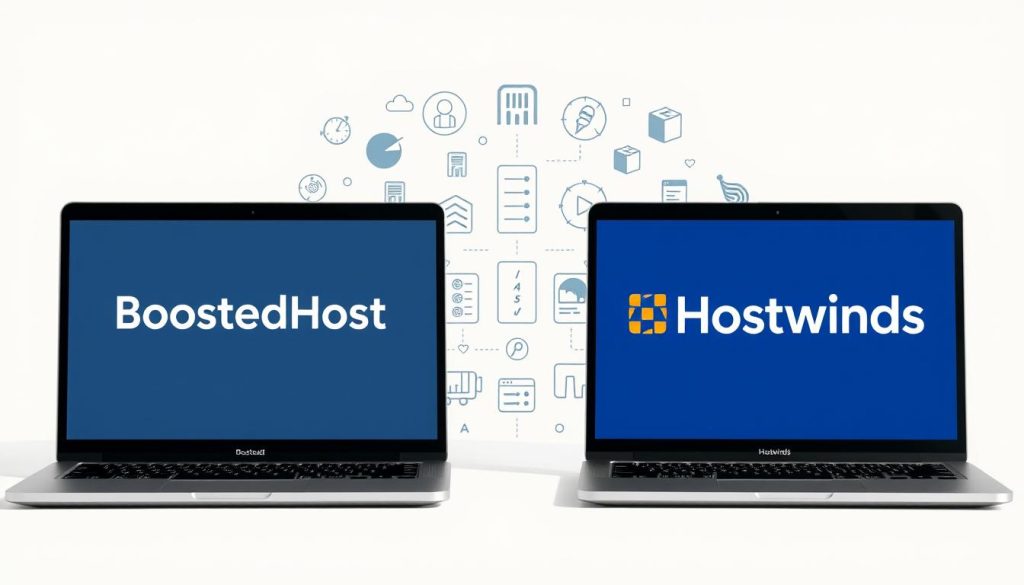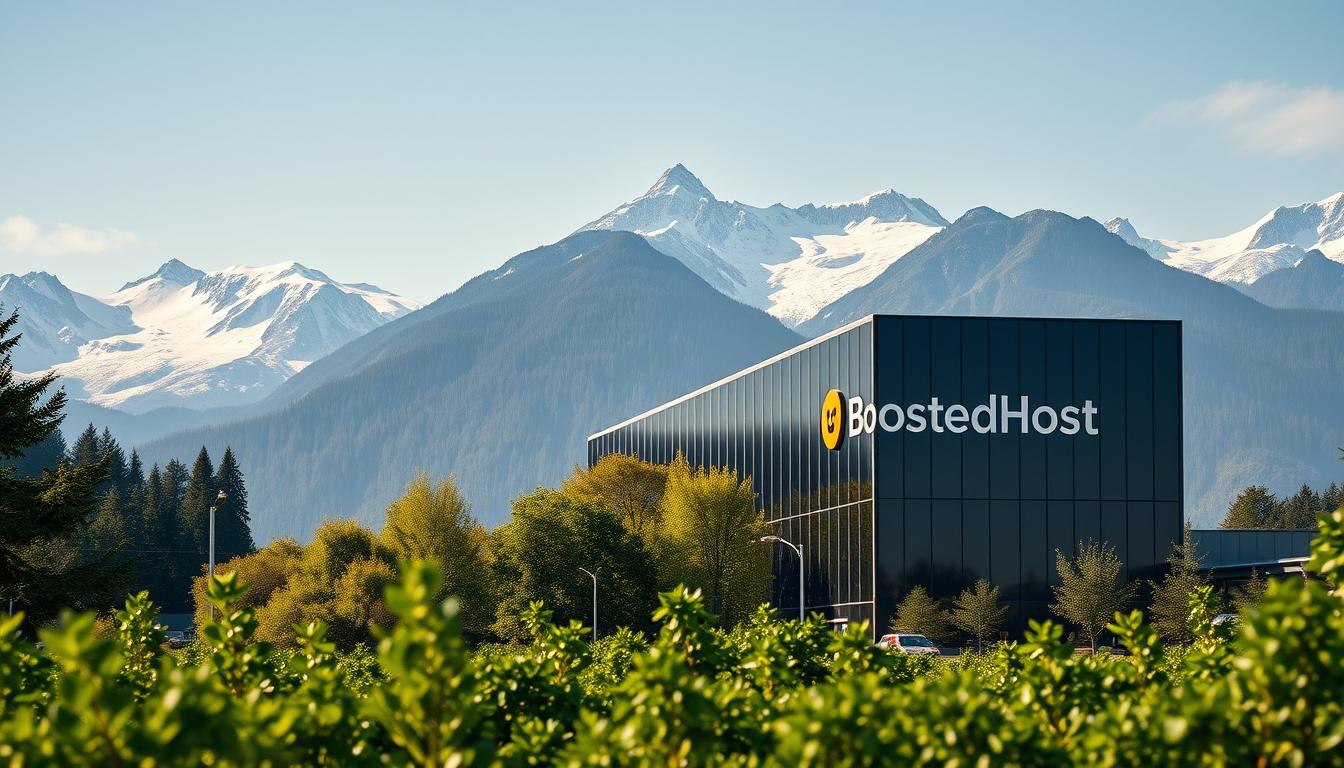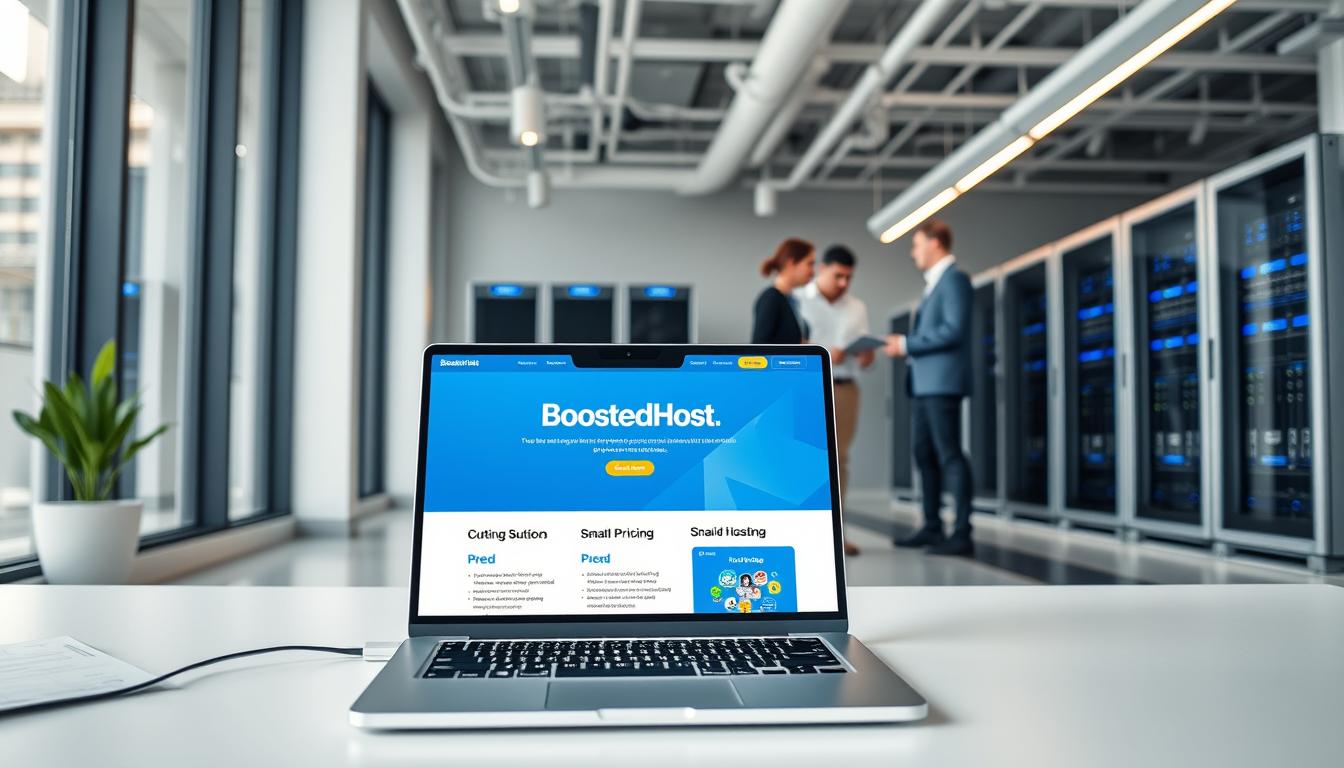We know the weight of this choice. You care about speed, uptime, and honest pricing. You want a hosting partner that treats your website like revenue, not a ticket number.
We’ll walk you through a focused, fair comparison of two major web hosting companies in 2025. Our criteria are clear: real-world performance, measured uptime, total cost of ownership, and day-one features that save cash.
Expect data-first checks on LiteSpeed, caching, TTFB, and backup policies. We spotlight a Swiss-grade setup—LiteSpeed + Redis + Cloudflare DNS and a global CDN engineered for sub-200ms TTFB—against a proven uptime track record and broad product catalog.
We also cover support responsiveness, included migrations, SSL, backups, and AI site builders so you can pick the right service for beginners, agencies, or performance-first ecommerce sites.
Key Takeaways
- We compare speed, uptime, pricing transparency, and overall value for 2025.
- Performance focus: LiteSpeed, caching, and sub-200ms global TTFB matter.
- Reliability focus: measured uptime and backup policies drive trust.
- Day-one features (AI builder, free SSL, migrations) cut ownership costs.
- Support quality and multi-channel access influence real operational uptime.
Quick Verdict: Which host wins on speed, uptime, and total value in 2025
We cut through the marketing noise to give a clear winner on speed, uptime, and real-world value for 2025.
Speed: The performance leader uses a LiteSpeed + Redis + Cloudflare DNS stack. That combo delivers faster TTFB and page loads out of the box, especially for WordPress and WooCommerce sites.
Uptime: Both providers show strong reliability. One targets a 99.99% measured uptime while the other has achieved 99.99%+ in long-term reviewer tests. Either choice is solid for critical web operations.
Value and features: The performance-first option bundles free SSL, daily or weekly offsite backups, malware/WAF, a global CDN, migrations, and Orbit AI builder across plans. The competing provider shines with very low first-term pricing and a broad product catalog.
Support and transparency: Fast, expert 24/7 human support and clear renewals push the performance-first host ahead for most businesses. If you need rock-bottom entry pricing or deep VPS/dedicated options, the alternative remains a sensible pick.

- Best for speed and predictable value: performance-first host with bundled essentials.
- Best for low entry cost or wide product needs: budget-focused provider with strong uptime history.
BoostedHost vs Hostwinds
Choosing the right host comes down to who matches your priorities: speed, budget, or control. We map audiences to offerings so you can choose the best fit for your website and growth plan.
Who each provider is best for
Beginners: Orbit AI gets a WordPress site live in minutes. It’s fast and removes setup friction for new users.
Small business: Managed stacks with bundled SSL, backups, malware/WAF, and a CDN lower costs and operational risk. The alternative appeals to price-sensitive startups with low first-term plans.
Agencies / multi-site: Staging, Git/SSH, white-label access, and CloudLinux isolation give predictable performance for portfolios. If you need granular VPS or dedicated control, the other provider scales into that space.
At-a-glance: strengths, trade-offs, and what matters
- Strengths: Speed, clear renewals, included security, global data centers, and responsive support.
- Counterpoint: Long-running uptime history, very low entry pricing, and a broad catalog of cloud, VPS, and dedicated services.
- Trade-offs: One side favors ease and performance; the other favors budget-first plans and deep infrastructure options.
“Match your core priorities—speed and simplicity versus budget-first entry and infrastructure growth.”

Performance showdown: LiteSpeed servers, TTFB, and real-world load times
Measured load times reveal which stack actually moves the needle for conversions. We tested stacks and focused on what affects user experience — TTFB, caching, and PHP response under load. The goal: clear, practical insight so you can pick the better performance path.
BoostedHost: LiteSpeed + Redis + Cloudflare DNS for sub-200ms global TTFB
Stack advantages: LiteSpeed Web Server with Redis and OPCache, Ultrafast PHP, optimized MySQL, and Cloudflare DNS deliver lower TTFB. CloudLinux isolation reduces noisy-neighbor issues and stabilizes performance under traffic spikes.
Hostwinds: strong uptime with average‑better‑than‑average response times
The Business Shared tier runs LiteSpeed too. Reviewers logged 99.99%+ uptime and response times that sit at average to better-than-average levels. Shared plans are reliable, and Business tiers give a clear performance bump.
Caching, PHP optimization, and Core Web Vitals impact
Why LiteSpeed matters: it handles PHP faster and integrates caching natively. That cuts TTFB and improves LCP and INP — tangible gains for SEO and conversions.
- Stack contrast: LiteSpeed + Redis + OPCache + Cloudflare DNS vs. standard shared with LiteSpeed on Business.
- Performance win: lower TTFB equals faster product pages and smoother checkout flows for WooCommerce.
- Practical outcome: better Core Web Vitals lead to higher engagement and more revenue per visit.
For businesses that want predictable speed and managed tuning, consider managed web hosting — it bundles these features and reduces setup time. Explore managed web hosting for a performance-first option.
Uptime reliability and SLA confidence
Uptime is the single metric that turns a good hosting promise into real business continuity. We focus on measurable availability and real-world protections that keep your site online during peak events.
Measured 99.99% on modern, isolated CloudLinux stacks
We see a clear advantage when providers run CloudLinux with LVE and CageFS. Resource isolation limits noisy neighbors and reduces cascading failures.
That technical hardening supports the claimed 99.99% measured uptime. In practice, 99.99% means under 52 minutes of downtime per year—tight margins for revenue-critical sites.
Consistent uptime records and SLA confidence
Reviewers report 99.99%+ uptime across shared tiers for the competing provider. Their data centers in Seattle, Dallas, and Amsterdam add network redundancy and geographic resilience.
Both approaches earn trust: one with isolation and proactive backups, the other with resilient facilities and strong SLA language from reviewers.
- Target: 99.99% or better = <52 minutes downtime/year.
- Isolation: CloudLinux LVE + CageFS prevents noisy-neighbor impact.
- Facilities: Multi-site redundancy reduces single-point failures.
- Business impact: Stable uptime protects campaigns, checkout flow, and lead capture.
- Monitoring: Pair hosting with synthetic checks and alerting to verify SLA adherence.
| Metric | Isolation & Security | Measured Uptime | Data Centers / Redundancy |
|---|---|---|---|
| Performance & Stability | CloudLinux LVE, CageFS | 99.99% claimed | Multi-region with failover |
| Reviewer Record | Proactive backups, WAF | 99.99%+ reported | Seattle, Dallas, Amsterdam |
| Operational Advice | Use isolation + monitoring | Verify with synthetic tests | Ensure SLA fits business needs |
“Measure uptime, and you measure what keeps revenue flowing.”
For ecommerce sites that need both speed and reliability, consider a managed plan that bundles isolation and monitoring. Explore optimized WooCommerce hosting here: managed WooCommerce hosting.
Pricing transparency, renewals, and total cost of ownership
Pricing tells the real story — what you pay today and what you pay next year. We focus on renewal clarity, included essentials, and the real 12‑month cost for comparable hosting plans.
BoostedHost: clear renewals and essentials bundled
Launch $2.35/mo → renews $9.95; Accelerate $3.35 → $14.95; Starlight $7.95 → $19.95. Each plan includes SSL, daily or weekly offsite backups, free migrations, WAF/malware protection, and the AI site builder.
That means fewer paid add-ons and more predictable costs. Select annual billing also includes a free domain on eligible TLDs — remember domain renewal after year one.
Hostwinds: low entry pricing, watch the add-ons
Intro shared rates run as low as $3.29–$5.17 for basic tiers; Business Shared is $5.64–$7.99 first term. Renewals follow standard market levels and some security or backup features vary by tier.
Very low entry pricing is attractive, but you may pay extra for offsite backups, advanced malware protection, or CDN in the first year. Factor that into your service budget.
What you actually pay over a year
| Tier | First‑term (est.) | Renewal (mo) | Extras to add |
|---|---|---|---|
| Entry / Launch | $2.35–$3.29 | $9.95–$9.95 | Domain renewal, backups (if not included) |
| Mid / Accelerate | $3.35–$4.23 | $14.95–$14.95 | Malware/WAF, CDN (varies) |
| Top / Starlight | $7.95–$5.17 | $19.95–$19.95 | Priority support, advanced backups |
- We map first‑term vs renewal pricing to expose true yearly costs.
- Value callout: bundled SSL, backups, migrations often make the performance‑first host cheaper over 12 months.
- Beware upsells — extra security, backups, or CDN seats can erase intro savings.
“Always run the 12‑month math — renewal rates and paid add‑ons reveal the real hosting cost.”
Included features that save you money from day one
What comes bundled with a plan often defines your real first-year cost. We look at which inclusions cut setup time and recurring fees so you can launch a website without surprise bills.
Performance-first host: stacked essentials that reduce add‑ons
Free SSL, daily or weekly offsite backups, AI malware scans, WAF, and a global CDN come standard. That lowers the chance you’ll need paid security or restore services later.
Developer tools like staging, Git/SSH, and email accounts are included, which keeps operational costs down for agencies and shops that iterate often.
Practical inclusions for budget launches
Free site transfers and a drag‑and‑drop builder remove friction for new site owners. Shared tiers also advertise unlimited SSD and bandwidth under fair‑use.
Some nightly backups and a dedicated IP appear only on higher tiers — expect these to vary by plan.
Email, domains, and avoiding nickel‑and‑diming
Email hosting is included, but verify mailbox limits and storage. Year‑one domain credits exist on select annual plans; plan for renewal rates after year one.
- Bottom line: Bundled enterprise features minimize add-on spend.
- Free transfers and builders help tight budgets get live fast.
- Check mailbox limits, backup retention, and dedicated IP needs before buying.
| Inclusion | Performance‑first | Budget‑friendly |
|---|---|---|
| SSL | Included | Included |
| Offsite backups (retention) | Daily/weekly, 30 days | Nightly on some tiers |
| Staging / Dev tools | Git/SSH, staging included | Limited / higher tiers |
| Free transfers / builder | Free migrations | Weebly / free transfers |
AI website building and ease of launch
Getting a live website should be quick, simple, and low‑stress for any owner. Modern builders now combine AI, templates, and support to cut setup time.
Orbit AI creates a WordPress site in under five minutes. It scaffolds structure, generates content, and provides AI image and SEO tools. Combined with migrations and staging, Orbit speeds WordPress launches and reduces manual setup.
Weebly: simple drag-and-drop for starters
Weebly offers an intuitive drag-and-drop builder across shared plans. It’s easy for brochure sites and simple pages but includes fewer AI-driven workflows.
- When to pick Orbit: content-heavy blogs and WooCommerce sites benefit from AI content, templates, and faster WordPress setup.
- When Weebly fits: small static sites or beginners who prefer a visual editor without advanced AI routines.
Support matters during launch. We provide 24/7 live chat, phone, and fast help to resolve blockers. Use staging before you go live to test changes and confirm access for teammates.
“Orbit AI shortens time-to-live for complex WordPress builds while Weebly keeps simple sites straightforward.”
Try Orbit AI here: Orbit AI website generator.
WordPress and WooCommerce hosting experience
A fast, managed WordPress stack changes how your site converts and how much time you spend on maintenance. We look at server tuning, caching, and the day‑to‑day conveniences that matter for blogs and stores.
Managed WordPress stack
BoostedHost managed stack
We see an optimized MySQL setup paired with LiteSpeed Cache and Redis object caching. That combo cuts database query time and lowers TTFB.
Automatic WordPress updates, staging, and daily backups on higher tiers reduce admin work. CloudLinux isolation adds security and steadier performance under load.
Hostwinds: capable but less WP-focused
Hostwinds runs WordPress well, especially on Business Shared with LiteSpeed. It delivers solid speed gains when configured.
However, it lacks the same level of WordPress automation and bundled tooling. Expect to add plugins or services for backups, staging, or advanced caching.
- Why it matters: LSCache + Redis + tuned MySQL = faster cart and checkout for WooCommerce.
- Operational win: Managed backups, staging, and updates cut maintenance time.
- Sizing advice: Choose a plan by expected concurrent users and traffic spikes.
| Capability | Managed WP tooling | Speed optimizations | Maintenance |
|---|---|---|---|
| BoostedHost stack | Staging, auto‑updates, daily backups | LSCache, Redis, optimized MySQL | Low admin overhead |
| Hostwinds | Basic WP support, manual setup | LiteSpeed on Business tiers | More hands‑on |
| WooCommerce impact | Faster cart, better LCP/INP | Lower TTFB under load | Fewer third‑party add‑ons |
We recommend the managed stack for stores and high‑traffic blogs. It saves time and supports better performance and security.
Developer stack and advanced workflows
Teams that deploy frequently need a developer stack that removes friction and gives predictable access to servers.
BoostedHost’s developer toolkit focuses on modern workflows and safe releases. We get PHP selector support from 5.2 to 8.3, plus Node.js, Python, and Ruby on shared plans. That lets a user run mixed runtimes without jumping to a VPS.
Access and automation: Git-based deploys, SSH, staging, and Cron jobs enable continuous delivery and scheduled tasks. CloudLinux isolation keeps noisy neighbors from impacting performance and gives predictable resource limits.
Hostwinds’ strength is breadth. Their cpanel-based management is familiar to most admins. LiteSpeed runs on Business Shared, and their VPS/dedicated service offers full OS control—Linux or Windows, managed or unmanaged.
- Why it matters: PHP selector speeds compatibility fixes and module testing.
- Node.js/Python/Ruby: modern stacks run on shared without immediate migration to VPS.
- VPS/dedicated: choose this when you need custom kernels or deep server tuning.
Recommendation: For teams that need rapid CI/CD and staging, pick the shared plan with rich dev tooling and isolation. For deep customization or heavy backend jobs, move to a VPS or dedicated plan that gives OS-level control.
Data centers, global CDN, and where your users are
Where your servers live shapes real-world speed and resilience for your site. Location affects latency, DNS resolution, and Core Web Vitals.
We recommend picking a region close to your audience. That reduces TTFB and improves perceived performance.
BoostedHost: broad regional options and built-in CDN
Multiple regions: US, Germany, UK, Switzerland, Japan, Singapore, and more. Cloudflare DNS and a global CDN are included.
This mix speeds delivery across North America, Europe, and APAC without extra configuration.
Hostwinds: concentrated footprint with strong redundancy
Three audited data centers — Seattle, Dallas, Amsterdam — provide solid physical security and failover. They serve US and EU audiences reliably.
- Proximity matters — choose the nearest region to cut latency.
- Cloudflare DNS improves resolution speed and DDoS resilience.
- For multi-region reach, an included CDN reduces DIY complexity.
| Feature | Regions | CDN & DNS | Best for |
|---|---|---|---|
| Global spread | US, DE, UK, CH, JP, SG | Cloudflare DNS + global CDN included | Multi-region audiences, low-latency delivery |
| Concentrated redundancy | Seattle, Dallas, Amsterdam | Standard DNS, audited facilities | US/EU focus with strong physical backups |
| Operational tip | Map analytics to location | Configure CDN caching rules | Optimize site and domains for audience |
“Pick the nearest data center, then layer CDN and DNS for global reach.”
Backups, restores, and disaster recovery
Reliable backups are the safety net every website needs. A solid backup policy protects your data and gives you confidence after a bad deploy, hack, or hardware failure.
Daily or weekly remote backups: The entry plan includes weekly offsite backups. Mid and top plans run daily backups. All copies are stored offsite in a separate data center—usually within the same country when possible—to reduce cross-border latency and comply with local storage rules.
Retention is at least 30 days. That window allows point-in-time recovery for code, databases, and email. We like that restores are handled through cPanel. One-click restores cut downtime and human error when you need them most.
Practical benefits:
- Automated offsite backups protect against server failures, hacks, or accidental deletes.
- Daily vs. weekly options match site change frequency and risk tolerance.
- 30-day retention enables safe rollback of database and file-level changes.
- One-click restores via cPanel minimize downtime and manual steps.
- Advanced users can push archives to S3-compatible storage like Backblaze B2 for longer storage policies.
Why this matters: Including robust backup service in your hosting plan often removes the need for paid third-party backup plugins. That lowers total cost and simplifies recovery procedures. For businesses, this translates into faster recovery, stronger security posture, and less operational risk.
“Automated, offsite backups with easy restores turn recovery from a crisis into a routine procedure.”
Free migration, onboarding, and control panels
A smooth migration reduces downtime and protects revenue during a platform change. We prioritize hands-on onboarding so your site moves safely and fast.
BoostedHost: frictionless migration with 24/7 expert help, cPanel control
We offer free migration for up to 5 WordPress sites. Our team maps databases, email, and DNS to avoid surprises.
Channels: live chat, chat, phone, email, tickets, Discord, and WhatsApp — all available 24/7 for immediate help.
Hostwinds: free transfers and standard cPanel; interface can feel dated
Hostwinds provides free transfers and uses cpanel like we do. Reviewers note the UI works but can feel clunky.
| Step | Typical Time | What we handle |
|---|---|---|
| Initial audit | 1–2 business days | Files, DB, email mapping |
| Staging & testing | Same day to 48 hrs | Staging validation, plugin checks |
| Cutover | Scheduled low-traffic window | DNS switch, final sync, rollback plan |
- Why this matters: cpanel parity keeps the user experience familiar.
- Schedule moves in low-traffic windows and use staging before cutover.
- Phone and live chat access speed resolution during complex moves.
“Hands-on migration and 24/7 multi-channel support make platform moves predictable, not risky.”
24/7 support responsiveness and real expert help
When sites go down, the team on the other end of the line decides how fast you recover. Fast, expert support reduces downtime and keeps leads from slipping away.
BoostedHost provides multi-channel support with live chat, chat, email, tickets, Discord, WhatsApp and phone (+41 44 500 40 65). Most requests are resolved in minutes by in-house people who escalate quickly. That hands-on approach means fewer back-and-forths and faster fixes for DNS, SSL, email or PHP version issues.
Real-world responsiveness
Hostwinds offers chat, phone and ticket support and a deep knowledge base. Their services are dependable, but user reports show a median experience around average — good for routine tasks, slower for complex onboarding.
Business impact and action tip
Faster help equals less lost revenue. We recommend documenting your environment before filing a ticket. Include domain, DNS provider, PHP version and recent plugins to cut resolution time.
“Prioritize hosts whose people and processes fix issues fast — it’s the difference between a quick rollback and a lost sale.”
| Task | Response Expectation | Best Practice |
|---|---|---|
| DNS / SSL | Minutes (proactive) | Provide domain and TTL info |
| Email / PHP versions | Minutes–hours | Attach configs and error logs |
| Complex migrations | Hours–1 business day | Share staging access and backup |
Which host should you choose based on your needs
Not all hosting plans solve the same problems; match features to the job you need done.
Speed-first sites, ecommerce, agencies, and multi-site portfolios
We recommend the performance-first option for stores, agencies, and portfolios. It bundles LiteSpeed, Redis, and Cloudflare DNS for lower TTFB and better Core Web Vitals.
Staging, Git/SSH, daily or weekly backups, WAF, and a global CDN make site management predictable. Orbit AI speeds launches for complex WordPress builds and reduces setup time.
Budget starters, VPS/dedicated tinkerers, and scaling paths
If your priority is the lowest entry price or a move to custom VPS/dedicated control, pick the budget-first provider. It offers very low intro plans, Weebly for quick sites, and clear paths to VPS or dedicated servers.
That approach suits businesses that want raw storage, shell access, or full OS control as they scale.
- Choose the performance option if speed, global reach, and fewer add-ons matter.
- Choose the budget option if first-term cost or custom VPS/dedicated tuning is key.
- Consider domains and email: the performance plan often includes email accounts and a year-one domain on select TLDs.
| Need | Best fit | Why |
|---|---|---|
| High traffic ecommerce | Performance-first host | LiteSpeed/Redis, CDN, staging, backups |
| Lowest entry cost | Budget-first provider | Very low intro pricing, Weebly, shared resources |
| Custom stacks / scaling | Budget provider → VPS | Easy upgrade to VPS/dedicated for custom access |
“If you do not want to juggle backups, security, and CDN add-ons, pick the all-in plan that covers them from day one.”
Conclusion
This conclusion hands you a simple decision map: prioritize speed and all‑in value, or price and deep infrastructure.
BoostedHost leads on speed, isolation, transparent pricing, Orbit AI tools, and 99.99% uptime—paired with rapid, 24/7 support. That combo reduces add‑ons and saves time for teams that need predictable performance and fewer surprises.
Hostwinds impresses with a long uptime record, very low first‑term pricing, and an extensive VPS/dedicated catalog for custom stacks. It’s a solid pick for experimental builds or heavy customization.
Both providers are proven; your priorities decide the winner. Map your traffic, stack, and budget, then pick the platform that matches your website goals and long‑term value.
FAQ
Which host is better for site speed and Core Web Vitals in 2025?
We recommend the provider using LiteSpeed, Redis, and an optimized PHP stack for the fastest real-world load times and lower TTFB. That setup—combined with a global CDN and proper caching—gives consistent sub-200ms response in many regions and improves Largest Contentful Paint and CLS.
How reliable is uptime and do either provider offer an SLA?
Both companies publish strong uptime records and SLA commitments. One reports measured 99.99% uptime on isolated CloudLinux stacks. The other has a long history of high availability with data-center redundancy. We advise checking the SLA terms for credits and monitoring windows before you decide.
What should I expect to pay over a year for comparable shared hosting plans?
First-term promotional pricing can be very low with one provider, but renewals and add-ons raise the TCO. The alternative includes essentials like SSL, backups, and migrations in the base price, which can lower your real annual cost. Add up renewal rates, backup/restore fees, and domain charges to compare apples to apples.
Are backups and restores included or extra?
One provider includes daily or weekly offsite backups with 30-day retention and easy restores as part of plans. The other offers free site transfers and standard backup options but may require paid upgrades for longer retention or offsite storage. Verify retention, restore speed, and restore fees before signing up.
Do either host provide free migrations and onboarding help?
Yes. Both offer free migrations and cPanel-based onboarding. One emphasizes frictionless migration with 24/7 expert help and guided restores. The other provides free transfers but its control panel and onboarding UX can feel more traditional—still effective, but less hand-holding.
Which host is better for WordPress and WooCommerce?
If you need managed WordPress performance features—optimized MySQL, LiteSpeed Cache, Redis object caching—choose the host that bundles those optimizations. The other supports WordPress well but may require manual tuning or paid add-ons to match WP-specific conveniences for WooCommerce stores.
What developer tools and advanced workflows are supported?
Look for PHP version selector, Node.js, Python, Ruby, Git, SSH, staging, and Cron when you need advanced workflows. One provider lists a modern developer stack with staging and Git; the other relies on cPanel with strong VPS and dedicated server depth. Pick based on your preferred deployment flow.
How do security features compare—WAF, malware scanning, and SSL?
One host includes free SSL, malware protection, WAF, and CDN at the plan level, reducing third-party spend. The other provides basic SSL and may charge for some security extras. For business sites, plan for a host that bundles strong WAF and regular scans to avoid surprise costs.
Is there an AI website builder for quick launches?
Yes—one platform offers an AI website builder that can create a basic site in minutes and streamline launch tasks. The other includes a Weebly builder that’s beginner-friendly but has fewer AI workflows. Choose the builder that matches your speed needs and customization expectations.
Which host is better for beginners vs agencies and e-commerce?
Beginners benefit from intuitive builders, free migrations, and included backups—pick the host that bundles those. Agencies and e-commerce shops should prioritize speed-first stacks, staging, Redis, and scalable VPS/dedicated options—choose the provider with stronger performance tooling and developer features.
Where are the data centers located and does a global CDN come standard?
One provider offers multiple regions, including Switzerland, USA, Europe, and Asia, plus a global CDN for reach. The other has solid physical locations like Seattle, Dallas, and Amsterdam with robust redundancy. If your audience is global, prefer the host with built-in CDN points-of-presence.
How responsive is customer support and what channels are available?
Both offer 24/7 support. One emphasizes rapid, human responses across live chat, ticket, and phone, resolving many issues within minutes. The other provides reliable support that many users rate as average—effective but sometimes slower. Test live chat first when deciding.
Do shared plans include unlimited resources or are there restrictions?
Some shared plans advertise “unlimited” resources but enforce fair-use limits. One host tends to be more transparent about CPU and I/O protections on shared servers. Always check the acceptable use policy and resource caps if you expect traffic spikes or heavy email use.
Is domain registration and email hosting part of the plans?
Domain registration is available with both hosts. Email hosting is included on many shared plans, though features and mailbox limits vary. If email reliability is critical, confirm mailbox size, spam filtering, and SMTP limits before purchase.
How do renewals and billing transparency compare?
Expect lower promotional pricing on first term with one provider and clearer “all essentials included” pricing with the other. We suggest reviewing renewal rates, mandatory add-ons, and cancellation terms. Transparent billing reduces surprises at renewal time.
Will I be able to scale from shared to VPS or dedicated with either provider?
Yes. Both hosts provide clear upgrade paths—one with deeper VPS/dedicated offerings and the other with scalable cloud options tied to performance stacks. Consider how easy migrations are between tiers and whether automatic scaling or manual upgrades fit your growth plan.
What performance optimizations should I enable after moving my site?
Enable LiteSpeed Cache or equivalent, Redis object caching, PHP OPcache, Brotli/GZIP compression, and use the CDN. Optimize images, defer noncritical scripts, and use a staging environment to test changes. These steps improve Core Web Vitals and real-user speed.
Are there limits for databases and storage on shared plans?
Limits vary by plan. Many providers give reasonable database counts and SSD storage on entry tiers, while higher tiers increase database size and IOPS. Check storage types (SSD/NVMe), backup quotas, and database limits if you run multiple apps or large WooCommerce catalogs.
How do I decide between the two hosts for my specific site right now?
Match your priorities. Choose the host that bundles the features you need—speed stack, backups, migrations, and support—if performance and time-to-market matter. Pick the alternative if you need the cheapest entry price or deep VPS/dedicated control. Run a short proof-of-concept and test live chat to confirm support quality.




